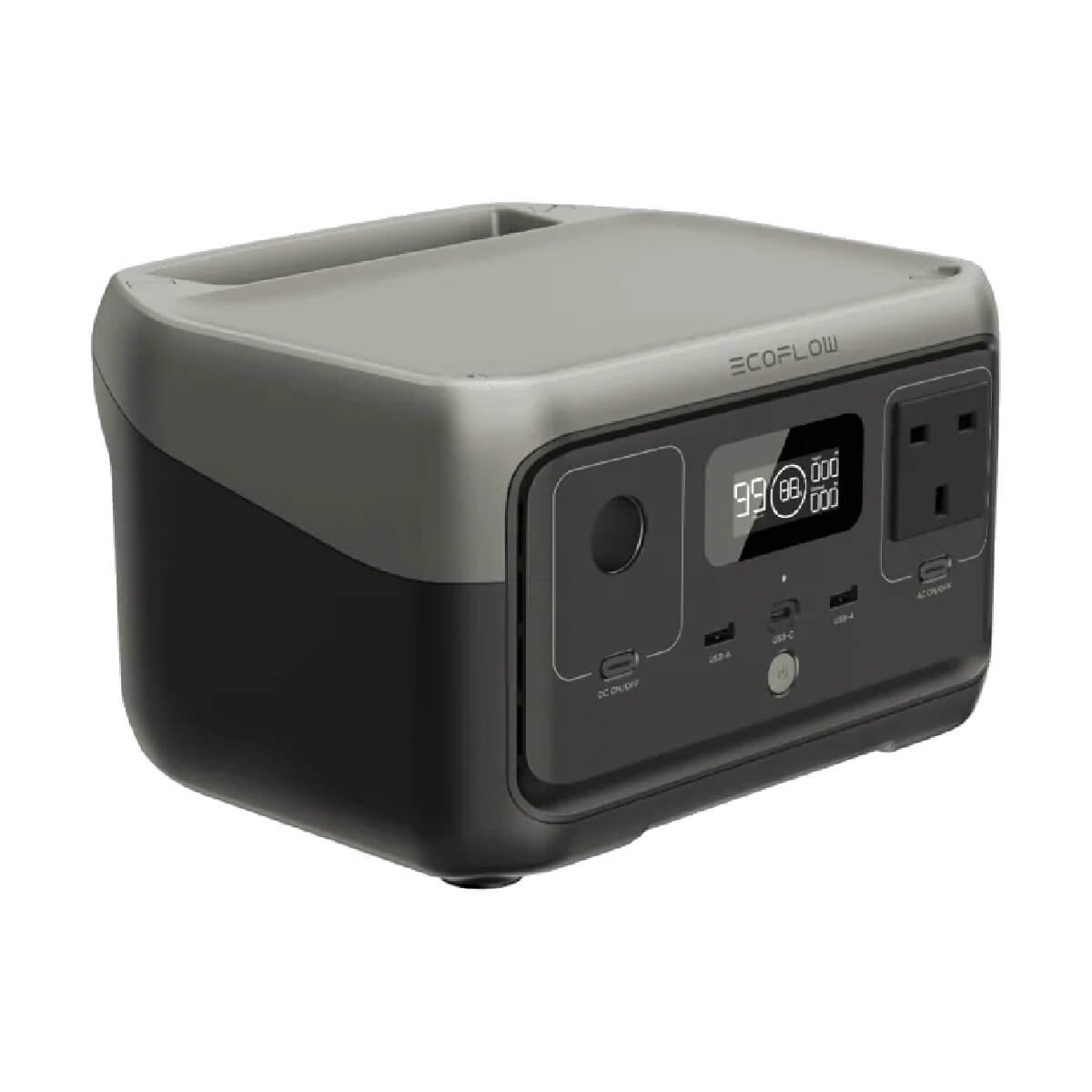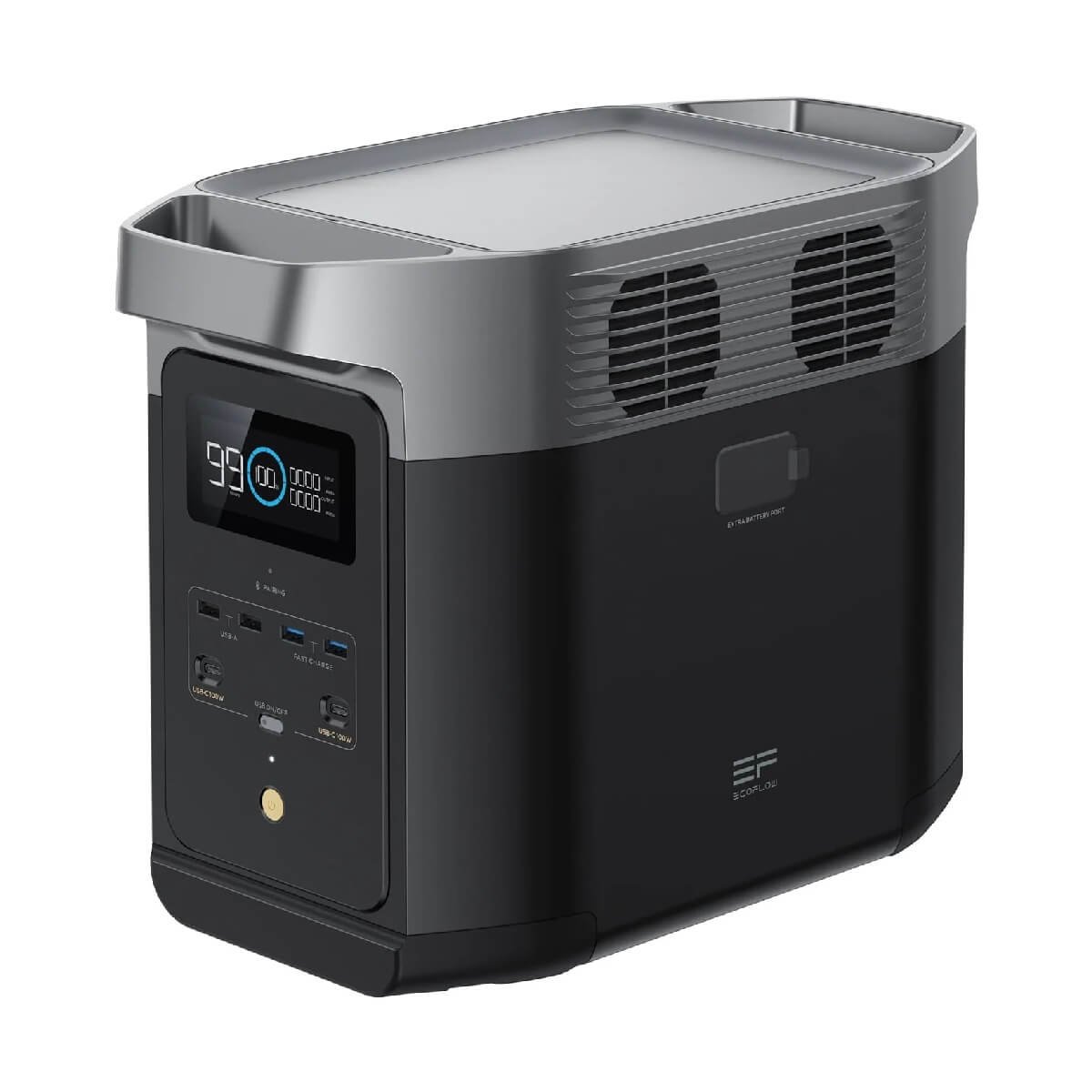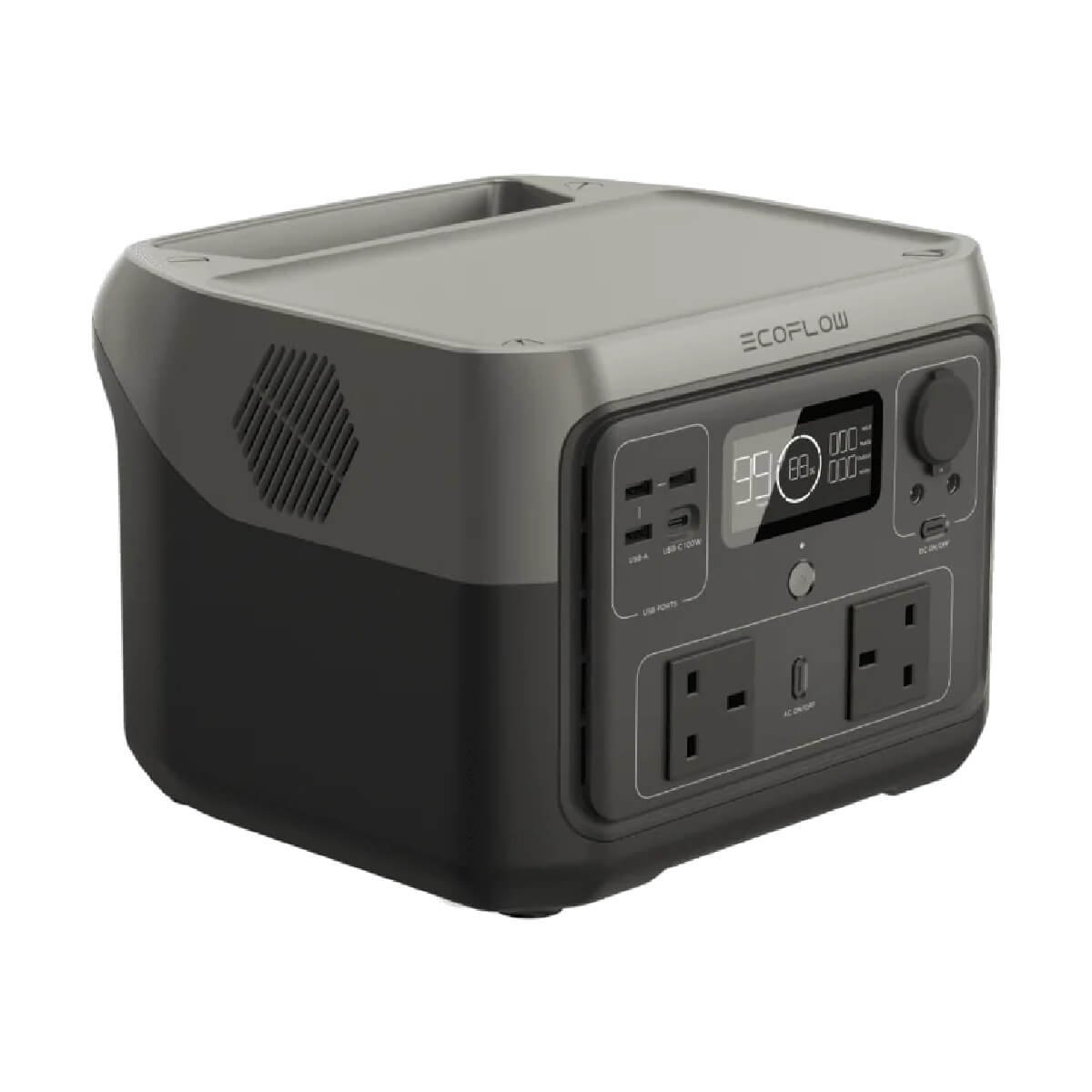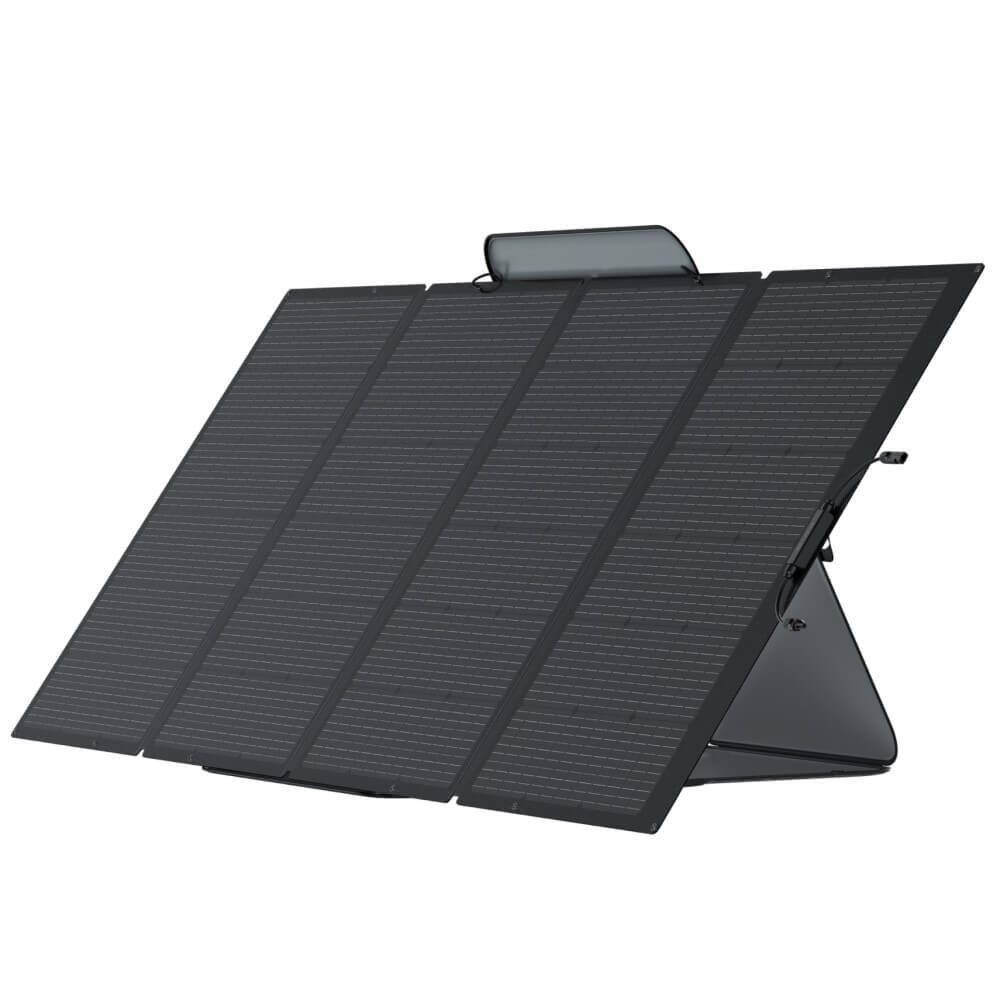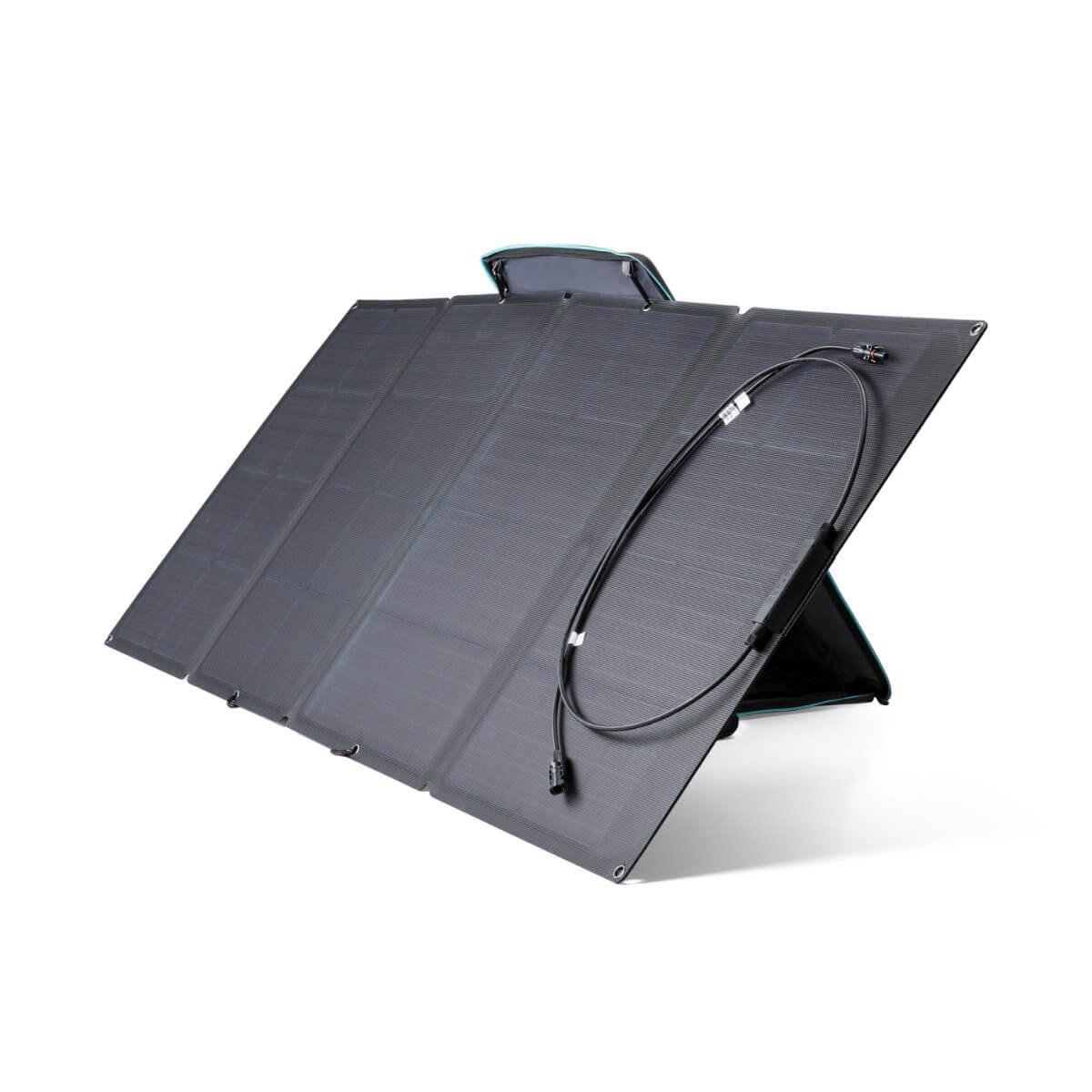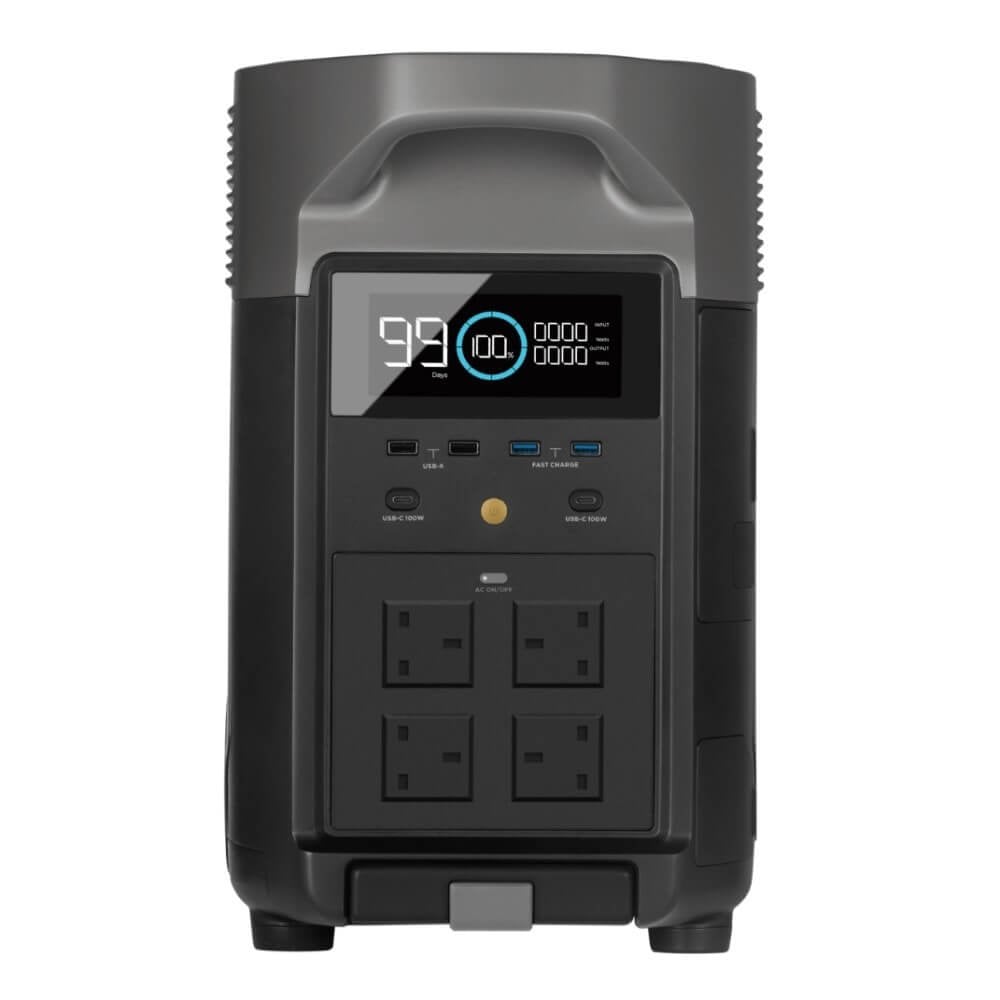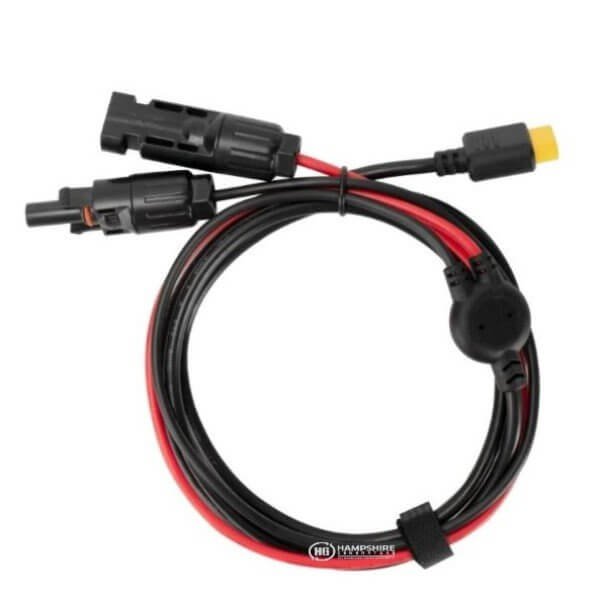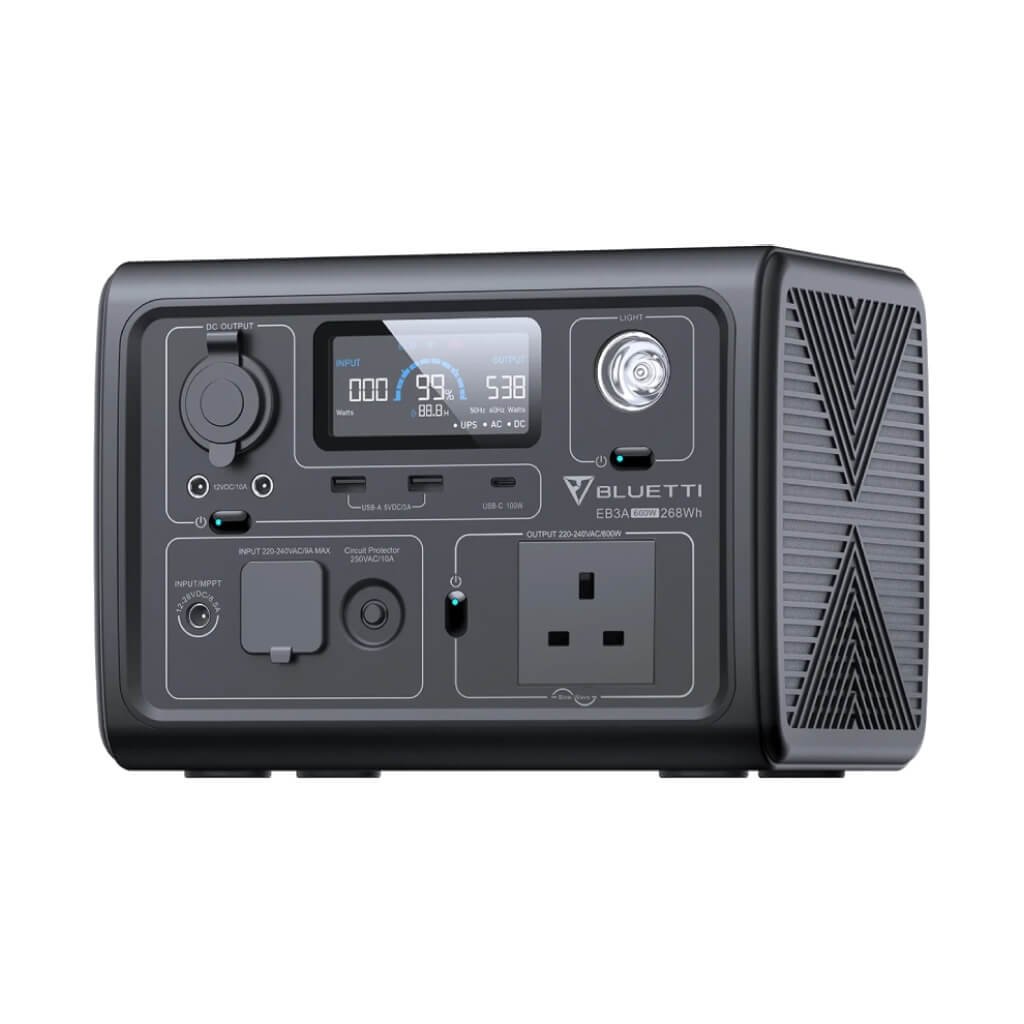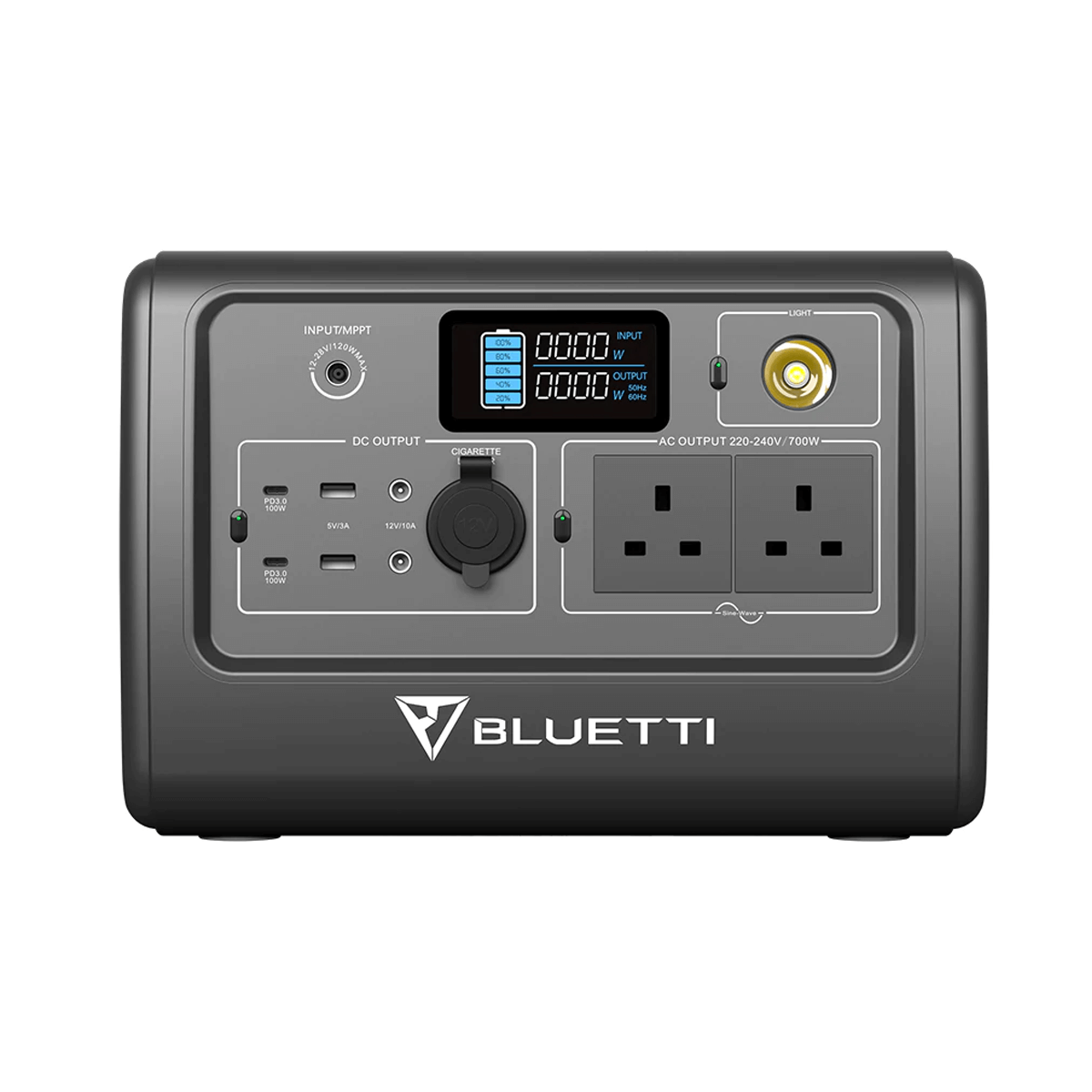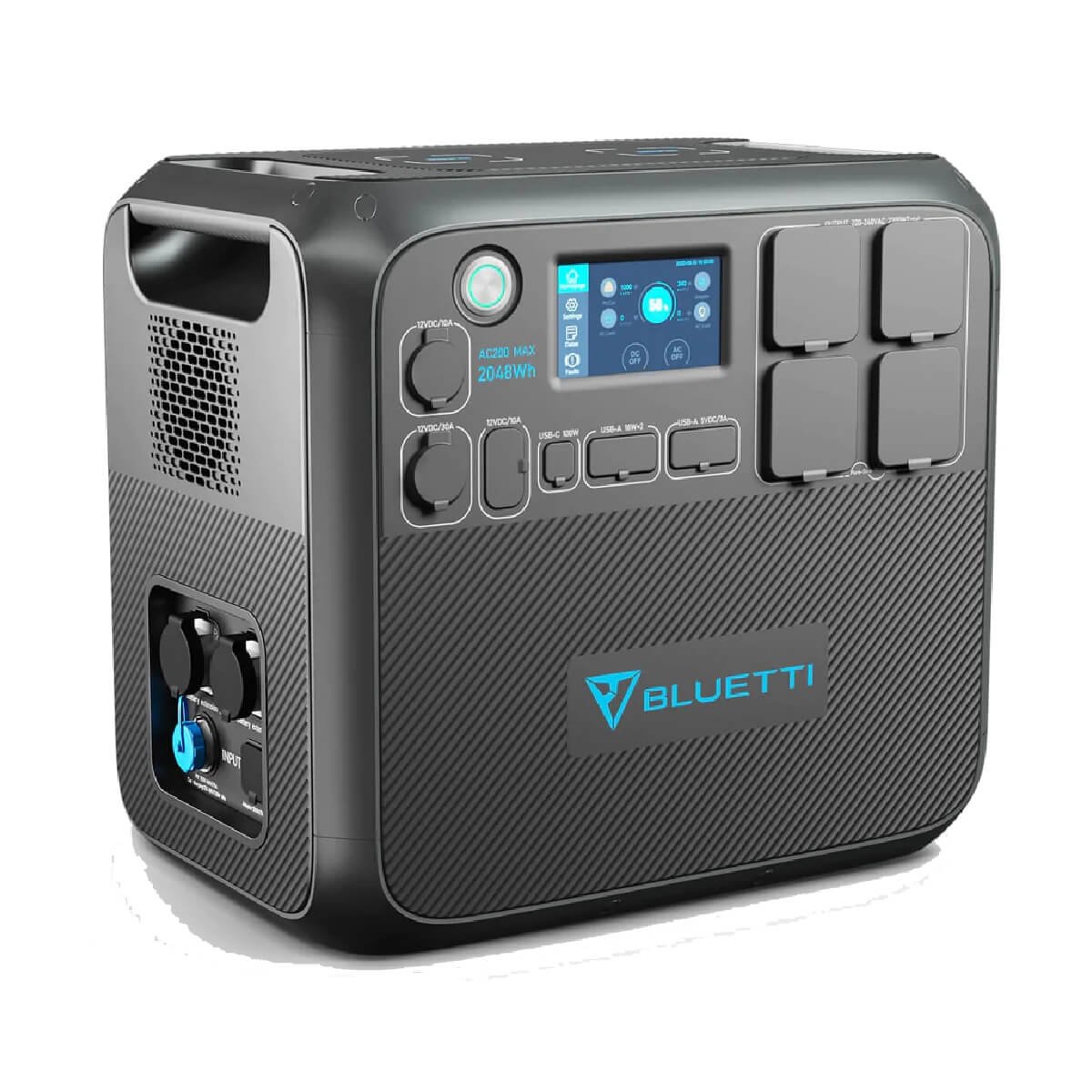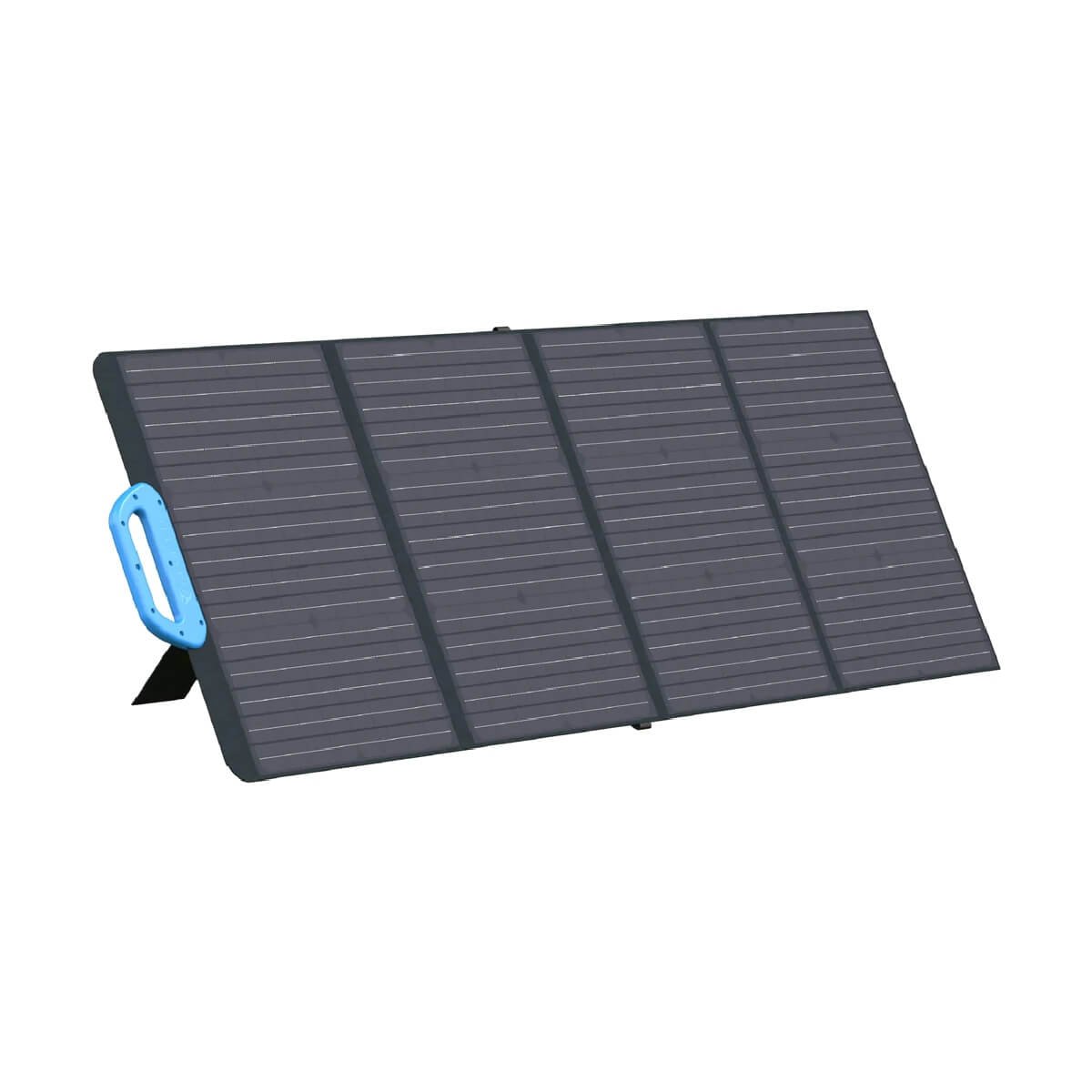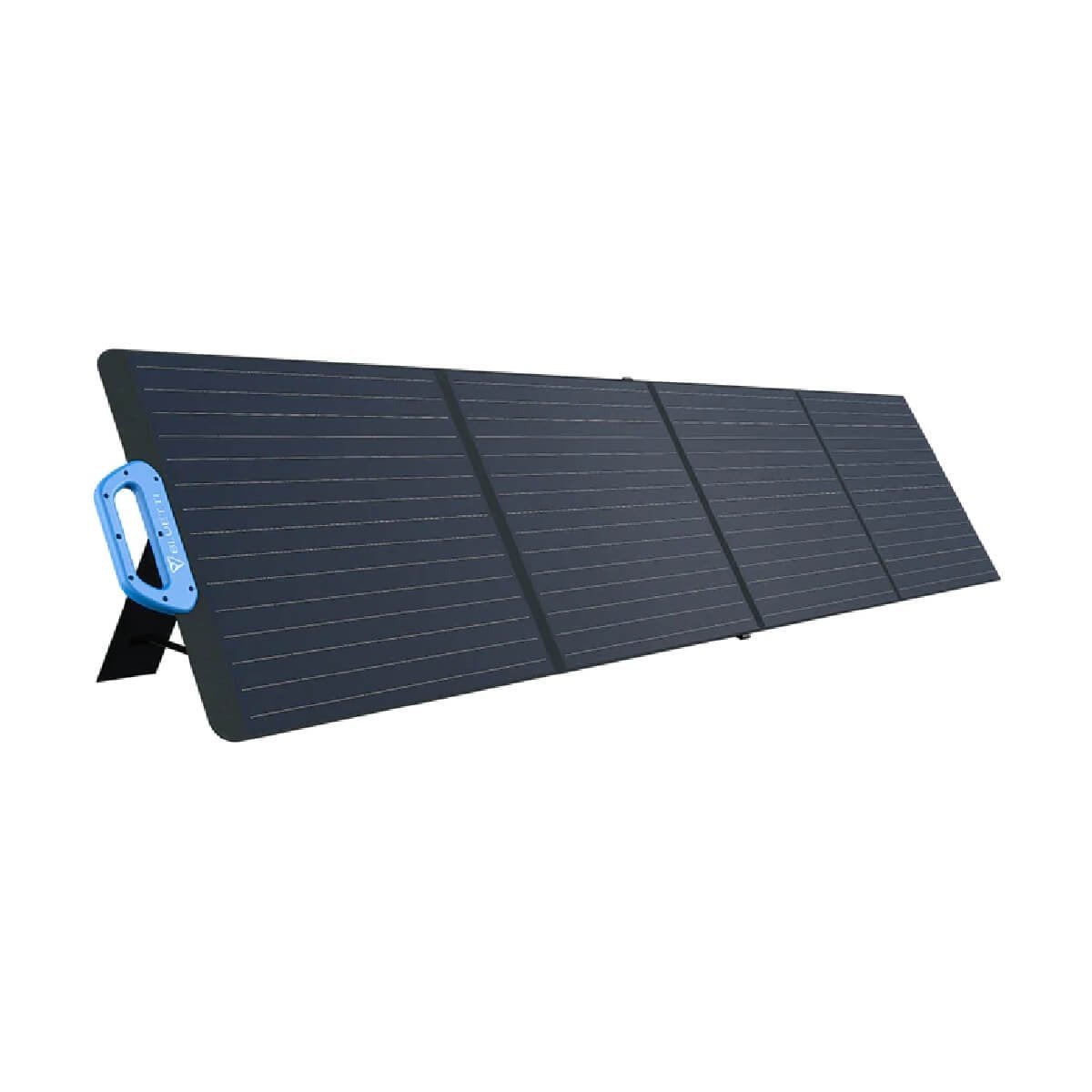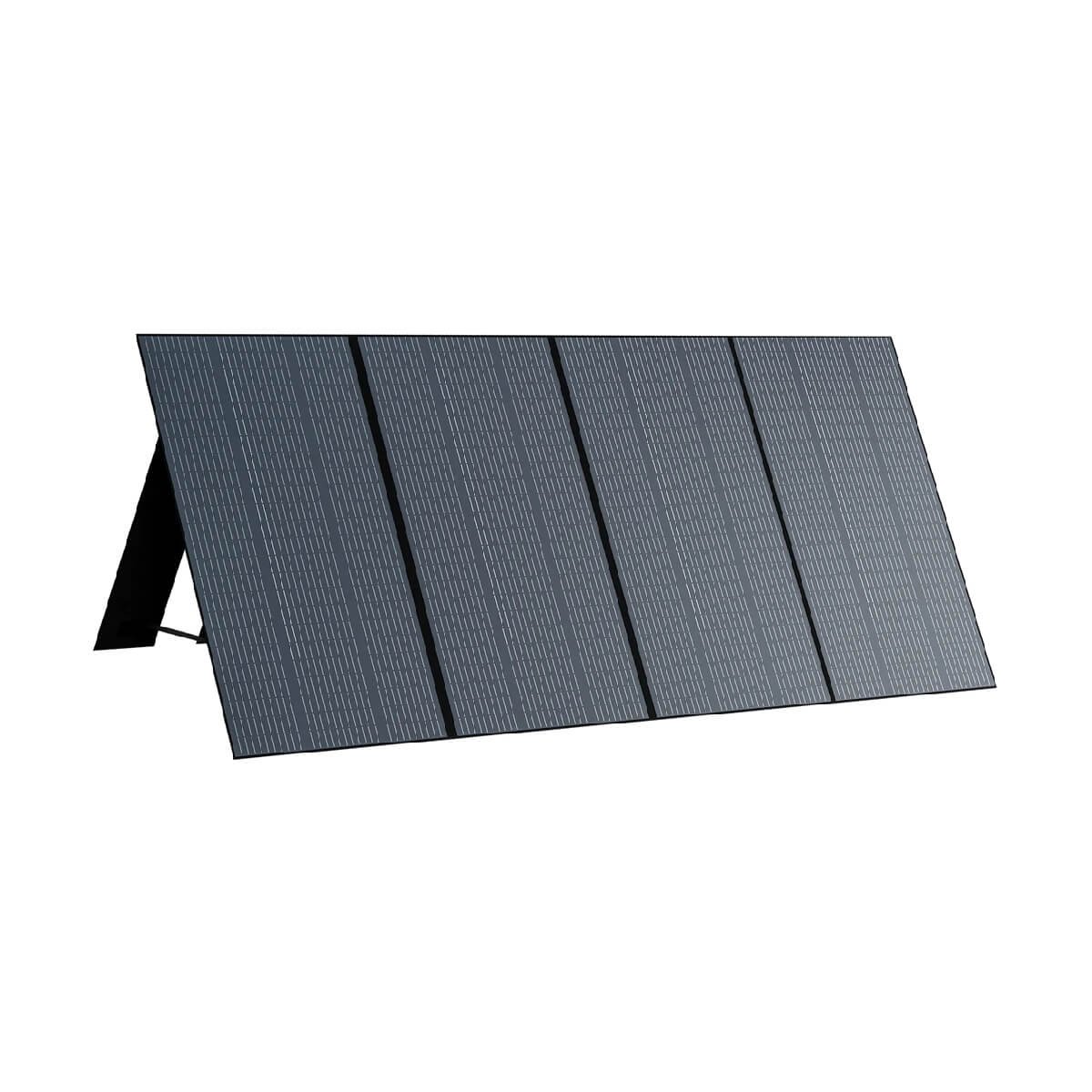Bluetti PowerOak
Who are Bluetti?
Bluetti was founded by battery engineers with years of industry experience, who wanted to make their own mark. They released their first portable power stations in 2019, and many more have followed since.
The battery industry is booming, and the technology is always improving. The Bluetti power station range is cutting edge, but a recent shift towards modularity in their systems ensures that someone with an older product can still enjoy the latest innovations.
Bluetti’s main line of powerbanks competes with those from EcoFlow and Jackery – we’ll take a look at them in a moment. Where Jackery’s range tops out at around 1000Wh of capacity, Bluetti have decided to take things much further. The high end of their portable range tops out at 3000Wh of capacity, blurring the line between portable power and home backup, and bringing them into direct competition with EcoFlow’s high-capacity offerings. The aforementioned modularity blurs this line further – you can buy a battery pack, and add capacity or additional charging options later.
They also make dedicated home backup power stations. These are large-capacity portable batteries which incorporate powerful inverters. You can use this kind of power storage to store solar electricity for later use, or as a backup if you’re concerned about blackouts or energy shortages.
Filling out the catalogue is a selection of fold-up solar panels, ranging from small and light to decidedly beefy.
This page serves as an overview of the Bluetti products that we sell in our shop, giving you an idea of what might be right for you.
The Bluetti power station range
Bluetti’s bread and butter are their portable power stations. These are an integrated off-grid power solution that combine a battery, an inverter, and a solar charge controller in one unit. They’re perfect for trips away from home where you have neither mains sockets nor a bespoke off-grid electrical system, and you need to do more than just keep your phone charged.
The Bluetti power station range is similar in its selection of capacities to that of EcoFlow and Jackery, with low, mid, and high capacity options. Every Bluetti power station (except the AC50S) now uses LiFePO4 battery chemistry. This is an upgrade from their older NMC batteries, and it puts their specs up to match those of their competitors. This is best reflected in faster charging times and much longer lifespans.



These powerbanks are now able to boast 2500 cycles before their batteries reach 80% of their original capacity. EcoFlow’s claim sits at 3000 cycles. These are all fairly ludicrous numbers – you’d have to fully discharge your battery almost every day for 10 years to reach 3000 cycles. That said, this longevity is a significant increase from that of Bluetti’s first generation, which was around 1000 cycles.
Bluetti’s power stations all have bright, informative displays which tell you what’s going on with your battery. The more fully-featured models, like the AC200P, AC200Max, and AC300 have multifunctional touchscreens. The screens are very similar to those found on EcoFlow’s power stations, and compare favourably to Jackery’s more basic displays.



Bluetti do have an app which lets you monitor and control your Bluetti power station. However, only the newer models (the AC200Max, AC300, and the EB3A) are Bluetooth-enabled. The app is less fully-featured than one might like, but this may change as it seems that there’s a focus on app control for Bluetti’s power stations going forward. By contrast, EcoFlow have an excellent app which works with every one of their new generation power stations.
Let’s take a look at the power stations themselves.
| Bluetti EB3A | EcoFlow RIVER 2 | Jackery Explorer 240 | |
|---|---|---|---|
| Capacity | 268Wh | 256Wh | 240Wh |
| Inverter power | 600W | 300W | 200W |
| Charge time – mains | 1.3 hours | 1 hour | 5.5 hours |
| Charge time – 100W solar | 4 hours | 3 hours | 4.5 hours |
| Lifecycles | 2,500+ | 3,000+ | 500+ |
| Warranty | 2 years | 5 years | 2 years |
| Bluetti EB55 | EcoFlow RIVER 2 Max | Jackery Explorer 500 | |
|---|---|---|---|
| Capacity | 537Wh | 512Wh | 518Wh |
| Inverter power | 700W | 500W | 500W |
| Charge time – mains | 3 hours | 1 hour | 7.5 hours |
| Charge time – 200W solar | 4 hours | 3 hours | 5 hours |
| Lifecycles | 2,500+ | 3,000+ | 500+ |
| Warranty | 2 years | 5 years | 2 years |
| Bluetti EB70 | ECOFLOW RIVER 2 Pro | Jackery Explorer 880 | |
|---|---|---|---|
| Capacity | 716Wh | 768Wh | 880Wh |
| Inverter power | 1000W | 800W | 1000W |
| Charge time – mains | 3.5 hours | 1.1 hours | 6.5 hours |
| Charge time – 200W solar | 4 hours | 3 hours | 4.5 hours |
| Lifecycles | 2,500+ | 3,000+ | 500+ |
| Warranty | 2 years | 5 years | 2 years |
Note that we have reviewed Bluetti’s power stations before, but we haven’t carried out extensive testing to confirm the manufacturer’s claims regarding charge time and longevity.
By comparing the stats online, we see Bluetti’s portable power stations sit comfortably between Jackery and EcoFlow’s offerings. When considering arguably the two most important figures, price and charging time, Bluetti perfectly fills the mid-range bracket. EcoFlow stand out in their exceptional charging times, but Bluetti pack higher wattage inverters into their equivalent power stations. The choice between the brands, therefore, may well largely come down to what you personally need from a portable power station.
Bluetti large power stations and home backup
The AC200P and AC200Max
You may notice the absence of a ~1000Wh power station in Bluetti’s range. They’ve instead opted to fill the high capacity bracket with the 2000Wh AC200P and AC200Max.
AC200P
- 2000W inverter
- 2000Wh capacity
- 30x laptop charges
- 2+ hours running a fridge
- 1 hour running an induction hob
- 4.5 hours to fully charge
- Non-expandable
- No phone connectivity
AC200Max
- 2200W inverter
- 2048Wh capacity
- 30x laptop charges
- 2+ hours running a fridge
- 1 hour running an induction hob
- 5 hours to fully charge
- Expandable without battery modules
- Bluetooth app
These two power stations are very similar. They have essentially the same battery capacity, the same longevity, and the same charge times. The AC200Max has a 2200W inverter compared to the AC200P’s 2000W, and the Max incorporates four AC outputs compared to the P’s two. If remote control via your phone is important to you, this feature is only present in the AC200Max.
The other main differentiator is that the AC200Max is explicitly designed to be used with Bluetti’s new range of expansion battery modules.
B230 battery module
B300 battery module
The B230 and B300 expansion modules are standalone batteries with minimal integrated components. They can’t normally be charged via solar (see the Modularity section below), and they only incorporate a single cigarette lighter port and a couple of USB ports. The B230 and B300 primarily serve to expand the capacity of an existing power station. You can connect 2 expansion batteries to your AC200Max, putting its capacity up to more than 8000Wh and granting its suite of input and output options to the attached expansion batteries.
Bluetti’s recent move towards greater modularity and flexibility with its products has expanded the capabilities of the AC200P and Max – more on that later.
The AC300
Next we have the AC300. This device leans further towards the role of home backup, though it may be useful to some as a portable large capacity power bank.
The AC300 is a standalone inverter and charge controller – it doesn’t incorporate a battery, and we sell it with a B300 battery module by default. The AC300 acts as a high-spec power management system for up to 4 linked battery modules (more than 12,000Wh of storage). It can charge batteries at up to 3000W on mains power and up to 2400W on solar power. It incorporates a huge array of outputs, including 6 mains outputs, and a massive 3000W inverter.
Shop the Bluetti AC300The AC200P, AC200Max, and AC300 are seriously high-capacity off-grid power devices. Their utility for home use is clear – charge them up with solar power during the day, and use that power at night. Alternatively, keep them charged up for uninterrupted power supply during power shortages and blackouts. They can also be useful for powering high-wattage appliances where you don’t have easy access to a mains socket, like in a workshop or garage.
As portable power stations, their use-cases are more niche. They can be useful for long off-grid trips where you won’t have access to a bespoke electrical system, like camping out of a car or in a roof tent. They can also serve in place of a generator in off-grid situations where you need a lot of power, like in a camp kitchen or at outdoor events. It’s certainly interesting to see battery technology beginning to fill the space that for so long has been occupied by noisy, polluting diesel generators.
The EP500 and EP500Pro
Finally, we have Bluetti’s dedicated home backup power stations, the EP500 and EP500Pro. Both of these incorporate a huge 5000Wh battery, and the Pro can be expanded with up to two B230 or B300 battery modules. The EP500 has a 2000W inverter and a 1200W solar charge controller. The Pro bumps these up to a 3000W inverter and a 2400W charge controller. To give you some idea of how much power this is, the EP500 can power a domestic fridge for 2 days, and can run a 1000W microwave for 4 hours. These are dedicated home power storage solutions, for people who are committed to moving forward with electricity independence.
Shop the Bluetti EP500Modularity – accessories for your Bluetti powerbanks
Earlier, we mentioned that Bluetti have been moving towards modularity and flexibility in their products. This comes, for example, in the form of their battery modules, which allow you to expand the size of your power bank as you see fit. It also comes in the form of a couple of interesting products that augment the capabilities of Bluetti’s main line offerings.
The first is the P090D external battery connection cable. The new AC200Max and AC300 are already ready to connect to the B230 and B300 battery modules. This little cable grants the same modularity to a whole host of other power banks, including older models.
Making new products backwards-compatible with old ones is nice to see, and makes the ecosystem a whole lot more flexible. The power stations compatible with the P090D are: the AC200, AC200P, EB120, EB150, EB180, EB200, EB200P, EB240, PS200A, and the EP500Pro.
The T500/T400/T200/T90 AC adaptor broadens your options for charging your larger power stations. This connector allows you to charge a B230 or B300 directly from the wall, instead of through a connected power station.
Connecting the T500 to a power station allows you to double, or in some cases triple, the AC charging wattage by plugging into multiple wall sockets. With the AC200 series and the EP500, this allows you to bring the charging wattage up to 1000W, halving your charging time. With the AC300 and EP500Pro, you can plug into 3 wall sockets at once, cutting charging time by 66%.
Finally, there’s the D050S DC charging enhancer. This device plugs into the DC input on your AC200/P/Max and allows you to max out your power station’s charging input. With the D050S attached, you can double your solar input, or charge at maximum solar input and maximum mains input at the same time, significantly reducing charge time.
The D050S also allows you to plug a B230 or B300 into your AC200 and AC200P. When connected to an EB150 or EB240, the D050S again enables connection of a B230 or B300, as well as enabling charging via your car’s cigarette lighter socket or your leisure battery. Finally, the D050S makes it possible to charge a standalone D230 or D300 via a solar array.
Portable solar panels
Rounding out Bluetti’s off-grid range are their portable solar panels. These should be familiar in their form to anyone who has looked into portable solar panels before. They’re highly compact, flexible panels, which fold up into a carry case that’s about the thickness of a coffee table book. When deployed, the case doubles as a stand, supporting them at an angle appropriate for light collection. In Bluetti’s panels, this stand is adjustable, so you can adjust them as the angle of the sun changes. Bluetti’s portable solar panels feature built-in junction boxes with MC4 connectors, making them compatible with any system that uses these connectors.
PV120
- 165cm x 53cm
- 3hrs 45 to fully charge a Bluetti EB3A
PV200
- 226.5cm x 59cm
- 2 hours to charge a Bluetti EB3A
PV350
- 240cm x 90.5cm
- 2 hours to charge a Bluetti EB70
Bluetti’s panels are differentiated by their high efficiency rating of 23.4%. They also have an ETFE coating, making them very durable. This is something often seen on higher-end flexible solar panels intended for installation on roofs.
As you can see from the dimensions above, Bluetti’s portable solar panels range from fairly compact to enormous. These panels are very useful for their versatility. When you have fixed panels installed on a camper, you often need to choose between parking in the shade on a warm day or charging your batteries. A portable solar array bypasses this inflexibility.
Additionally, we can recommend the 120W and 200W panels as a good option for everyday solar charging to those who aren’t committed to a fixed solar array. The 350W model is again a more niche option, for when your charging needs are more significant. It could be a good option for those who require a large solar array, but who perhaps don’t have the roof space.
We hope this overview of Bluetti’s products has been useful. In our view, they produce quality portable power stations which sit at the higher end of mid-range. Their large, modular power stations and home backup solutions give a wide range of options to those with high power requirements. They produce some interesting peripherals which can change and expand the functionality of existing products, meaning that a device won’t be outdated as soon as the next wave of products rolls around. Finally, their portable solar arrays are a competent entry into that space, with some key features that help them stand out from the crowd.


